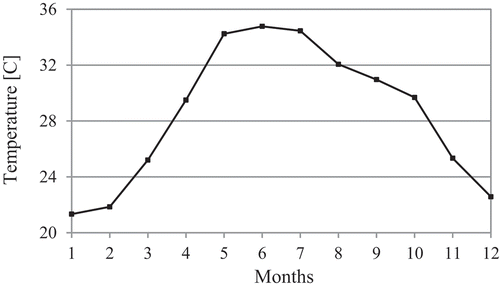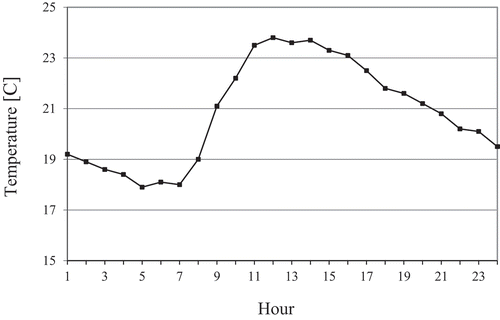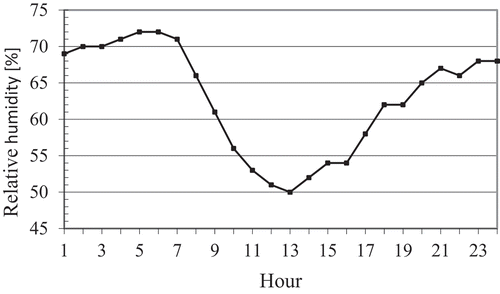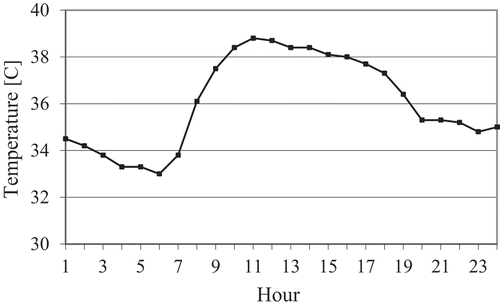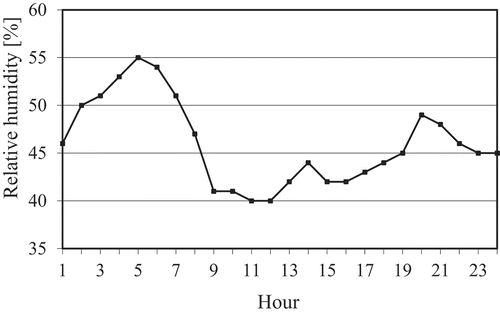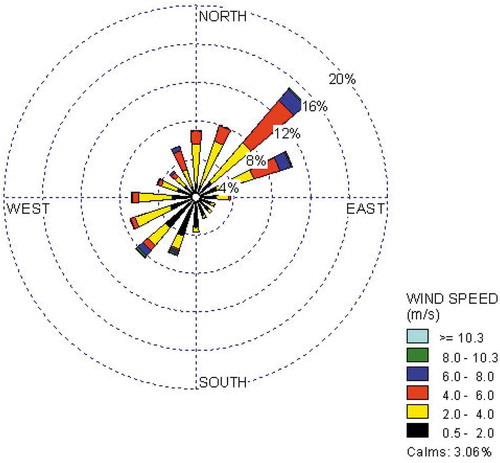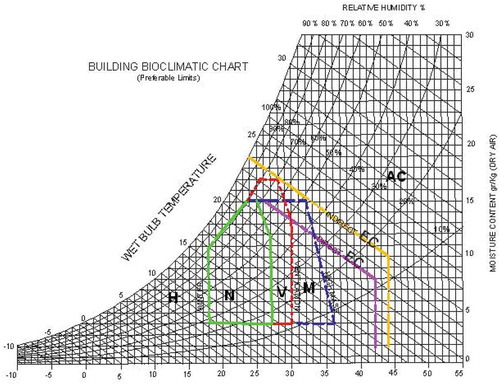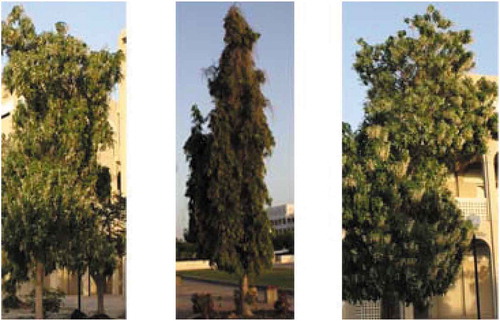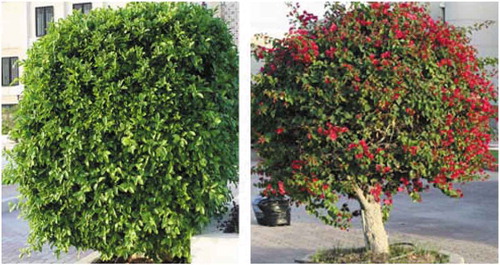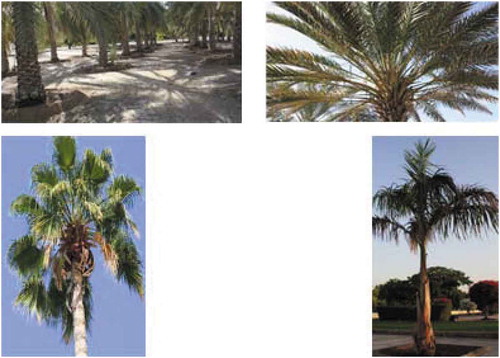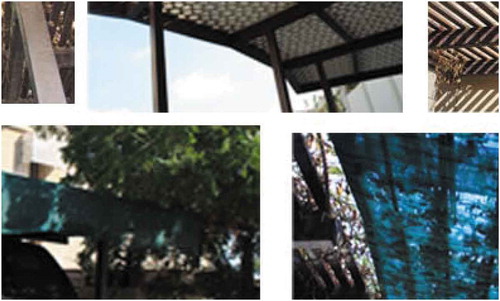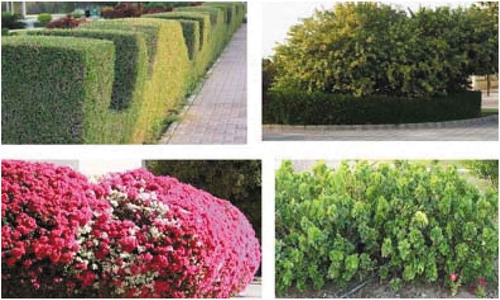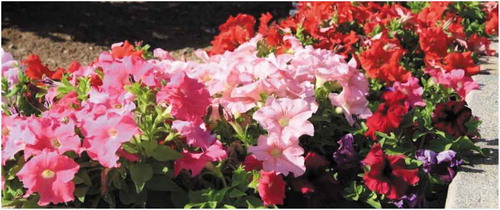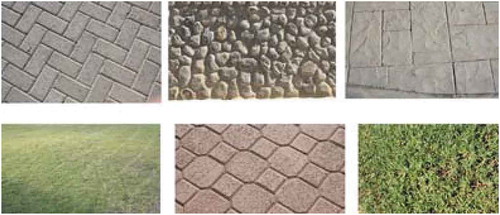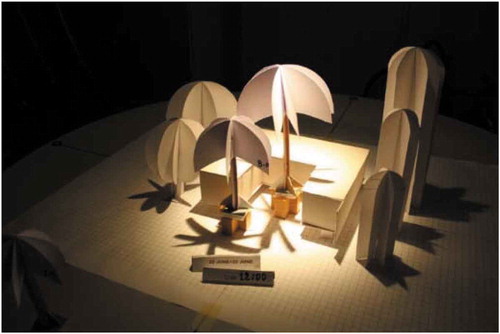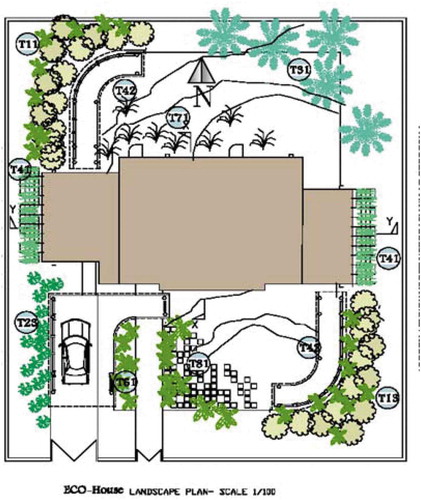Abstract
The increase of energy consumed by buildings in the Middle East is mainly due to the harsh weather that forces people to spend more time indoors. Moreover, the provision of a building’s indoor thermal comfort condition is achieved by an active cooling system. Further, designing buildings without taking into consideration proper design of the building form, orientation, and appropriate selection of the envelope materials can lead to a considerable increase of heat and energy use. Therefore, an appropriate approach to develop an architectural design incorporating passive environmental solutions related to the climate and the site is a must for achieving thermal comfort with less energy consumption. The Research Council of Oman has launched a competition to design, construct, and operate buildings that embrace sustainability principles. One of the eco-friendly buildings was investigated by the academic institution in Oman (Sultan Qaboos University). The objective of this eco-house project is to develop an innovative residential house that is aesthetically pleasing and functionally working, economic, technically feasible, energy-efficient, climatically appropriate, and socio-culturally acceptable. It is of utmost importance in prototype housing development to use appropriate materials which can be produced locally which would meet the climatic, technical, and aesthetic needs. This paper is intended to develop guidelines for assessing the constraints of a climate environment that supports and promotes a prototype of a sustainable house (i.e., eco-house) in the hot-humid climate of Oman.
PUBLIC INTEREST STATEMENT
Eco design is part of a global approach called “multi-step” and “multi-criteria”. This approach supports a product’s entire lifecycle in a circular economy perspective by saving and recycling at maximum natural resources. It has to do with considering specific criteria in different stages. Eco design is both a principle and an approach. It consists of integrating environmental protection criteria over a service or a product’s lifecycle. The main goal of eco design is to anticipate and minimize negative environmental impacts (of manufacturing, using, and disposing of products). Simultaneously, eco design also keeps a product’s quality level according to its ideal usage. Environmentally sustainable design (also called environmentally conscious design, eco design, etc.) is the philosophy of designing physical objects, the built environment, and services to comply with the principles of ecological sustainability.
1. Introduction
Buildings are major consumers of energy especially in the Middle East due to the fact that people spend more than 90% of their time indoors because of the harsh weather (Alnaser et al., Citation2008). As a result, the world has become more concerned with building design and construction. In the United Kingdom, for example, the government has set targets to reduce carbon emissions from generation and use of energy via energy white paper (Cooke et al., Citation2007). It has been estimated that 45.2% of the total UK energy consumption is from use within buildings (CIBSE, Citation1998), generating around 46% of the UK’s CO2 emissions (ECD, Citation2001). Based on a survey in the United States in 2005, energy consumption per household for a single-family detached house with five or more bedrooms is 160 MBtu per year (46,950 kWh/year) (EIA, Citation2008). This is equivalent to 33.22 metric tons of CO2 emissions per household per year.
Therefore, buildings have to reduce their reliance on nonrenewable energy. One possible method for doing this is by minimizing the various environmental impacts to a point where they can be assimilated by a region’s ecosystem without lasting damage.
A selection of architectural design projects produced since 1983 by the practice of Stephen Greenberg and Dean Hawkes incorporates aspects of research into low-energy design, which has followed the increase in energy costs that occurred in the early 1970s (Hawkes, Citation1995). An approach to the design of sustainable housing with low CO2 emission in Denmark has been investigated by Knudstrup et al. (Knudstrup et al., Citation2009).
Around 59% reduction in greenhouse gas emissions and utility bills has been achieved by designing a sustainable house in the United Arab Emirates (UAE) following an integrated process of design and performance evaluation (Al-Sallal et al., Citation2013). A study on the impact of urban patterns of residential buildings on energy use in UAE showed that 40% of total cooling energy is utilized to offset heat gain from walls and roofs, and it could reach 75% when combined with the glazing effect (Abou-Naga et al., Citation2000). Further, Guedes et al. offered an overview of sustainable architecture and urban design in Portugal (Guedes et al., Citation2009).
Inappropriate housing is characterized by poor indoor environmental conditions such as extremely low or high temperatures, lack of ventilation, etc. (Santamouris et al., Citation2007). Climate change may worsen existing indoor air problems and create new problems by altering outdoor conditions that affect indoor conditions (Mulengaa & Siziya, Citation2019). Natural ventilation has been widely used in buildings due to the great potential for energy conservation and indoor air quality (IAQ). Also, the fundamental purpose of buildings is to provide a comfortable living environment protected from the extremes of climate (Daemei et al., Citation2018). Bahoush & Salehabadi investigated warm and humid climate with the approach of production of quantitative and qualitative architectural models (Bahoush & Salehabadi, Citation2018). The result of their investigation shows that in order to design residential units from a thermal point, it is necessary to achieve the following objectives: 1. protection against hot outside, 2. radiation protection, 3. utilize the daily fluctuation of air temperature, 4. the use of winter heating in the winter, 4. reduce thermal waste of the building, 5. reduced the effect of dusty winds, 6. protects against humidity, 7. Reduced wind impact in building heat loss in winter.
The climate and landscape inherent to a region has, through time, served as the foundation for traditional Omani architecture. Inhabitants, in the past, attained comfortable and working environments through the appropriate choice of building forms, materials, and occupancy patterns. Modern planners of most urban settlements in Oman assumed that they were supposed to be unsustainable. Therefore, they consume natural resources and produce waste and pollution. They were made up of detached dispersed building blocks with wide grid streets, and they faced the following problems:
Significant problems of air quality, water quality, and pollution.
Microclimate warmer than surrounding countryside particularly at night.
Intensive use of energy for transport systems.
Lack of green spaces.
High heat stress on summer days due to high solar radiation and ambient air temperature.
High glare from direct and reflected sunlight.
Prevalence of dust storms.
High cost of energy for the attainment of thermal comfort.
Buildings do not interact with the requirements of the climatic environment.
Intensive consumption of energy used in buildings.
Indeed, 70–80% of total energy consumption is used just for operating AC systems for internal comfort. The depletion of Oman’s reserves of fossil fuels and the present practice of creating energy-inefficient buildings will lead to serious environmental problems in the future.
Sustainable design is aimed at minimizing various environmental impacts to a point where they can be assimilated by a region’s ecosystem without lasting damage. It uses the concept of the ecological footprint, which is a measure of human consumption of imported raw materials, food, and fuel to the settlement and the production of waste disposal. Sustainable design assumes the following guidelines:
Protection from climatic extremes through ecological planning.
Emphasizing the conservation of both natural and built environment.
Reduction of environmental damage.
Minimizing the consumption of energy in the operation of buildings.
Minimizing the consumption of energy in travel between essential activities.
Prioritizing the adaptation and re-use of buildings, infrastructure and roads, and the recycled building materials.
The use of local material components.
Assumption of self-sufficiency at all levels of settlement structure.
Change of the present energy-wasting lifestyles.
Diversity that allows a mix of different building types, activities, and social classes.
Closed-loop productivity through recycling, and the use of alternative energy sources.
The passive climatic design is to be understood as developing design solutions that exploit passive measures (e.g., building envelope design, climatic conditions, and natural energy sources) to achieve desired indoor and outdoor comfort conditions. This is contrary to notions of active design, where internal comfort is achieved primarily through mechanical measures.
Indeed, in an active design situation, the architect generally designs a building, and the engineer will afterward attempt to adapt the building to its surrounding climatic conditions, relying on the use of mechanical air-conditioning in all spaces with little concern for energy consumption.
Passive design relies on the thermal properties of a building’s envelope to create a protective barrier against the external environment. For instance, in hot dry climates, a building envelope with high external reflective properties and high thermal storage capacity is an adequate solution. In addition, controlled ventilation and natural cooling methods must be used to provide additional possibilities in maintaining desired internal comfort conditions. Openings in the building envelope are essential in an active design process.
Close professional cooperation between architects and engineers is a prerequisite for the implementation of passive design. This is due to the complex nature of applying passive design solutions or a mixture of active and passive design solutions to satisfy the functional requirements of contemporary buildings. Thermal evaluations of an architect’s designs should be made throughout the design process. The passive measures employed in the design of a building to achieve energy-efficient solutions will have a direct influence on the architecture.
Although the concept of Low-energy house is well known in cold regions, its applications in extreme hot-humid climates are still limited. The modern low-energy house is relatively a new concept to the GCC countries as only few low-energy houses are being built and tested for energy performance, cost, and livability. The concept carries a good potential to save energy required for space cooling in the residential sector. This work aims at detecting climatic environmental forces influencing the design of Sultan Qaboos University (SQU) eco-house related to the Muscat maritime climatic region. It is to develop guidelines for the assessment of the constraints of climatic environment that support and promote a prototype of sustainable house design.
2. Analysis of climate environment
2.1. Analysis of climate environment
The Muscat region has a maritime-type climate. This occurs where a large mass of hot dry desert region meets the sea. It is characterized by two marked seasons: a long hot season and a shorter cooler season. The hot season spans between April and October with air temperature having a mean maximum of 34°C to 39°C (afternoon) and mean minimum of 26°C to 30°C (before sunrise) with a diurnal range of about 10°C. The relative humidity ranges between a minimum of 40% to 60% (late afternoon) to a mean maximum of 70% to 90% (just before sunrise). The cooler season stays generally within comfort limits with a mean maximum temperature of 24°C to 27°C in the late afternoon and mean minimum of 20°C to 24°C just before sunrise. The relative humidity ranges between a minimum of 60% to 70% and a maximum of 70% to 90%.
Considerable evaporation from the sea is caused by strong radiation, but moisture is not precipitated and remains suspended in the air creating humid and uncomfortable conditions. Precipitation is slight and variable throughout the year in the range of 15–155 mm/annum. Sky conditions are normally clear dark blue and sometimes hazy due to suspended water particles in the air. Luminance is 1700–2500 cd/m2. Solar radiation is mostly direct and strong but with a strong diffused component due to hazy sky. Further, strong reflected components from the ground and buildings cause glare, long-wave re-radiation from all heated surfaces is not as rapid as pure hot-arid regions, and the diurnal range is not high (see Figure ).
Prevailing winds are northeasterly, with some local effects, as shown in Figure . Temperature inversion happens in the afternoons on the land mass, as a lower warmed air mass breaks through the higher cooler air mass, creating local whirlwinds. Coastal sea breezes are caused by unequal warming of sea and land mass. It blows from sea to land during the day and from land to sea during the night. Vegetation is sparse and difficult to maintain due to lack of rain and because subsoil water is deep. Intensive drip water irrigation systems are used in Muscat, but this causes a fast depletion of water resources.
2.2. Building bioclimatic analyses
This is based on the ASHRAE psychometric chart (Figure ), which defines a comfort zone in the middle. It defines boundaries of climatic conditions for various passive building design systems, and it suggests design strategies in order to restore comfort in hot regions. The chart contains the following zones: natural comfort zone (N), where human comfort is attained without any aid for internal conditions. Beyond that, the next and simplest means to restore comfort is natural ventilation (V). The next method to restore comfort is by thermal mass (M) in which potential cooling is proportional to the outdoor diurnal temperature range. This is applicable for a high mass building when ventilated only during night. Openings are closed during daytime, and building mass is cooled by night convection in order to reduce the heat accumulated during the day. The next zone is evaporative cooling (EC) by mechanical evaporative cooler (desert cooler). Evaporative cooling efficiency is proportional to wet-bulb depression (WBD), which is the difference between dry bulb temperature and wet bulb temperature. The air-conditioning zone is on when temperature goes beyond 35ºC and RH above 70%.
2.3. Design guidelines
2.3.1. Comfort requirements
It is concluded that the four months of December to March fall within the comfort zone without the need for aids. The months of April and November can make use of thermal mass and ventilation alone. The months of May, June, July, August, September, and October require full air-conditioning.
2.3.2. Shading requirements
Sunrays must be prevented from penetrating interiors for the period of 21 March until 15 October. Solar declination symmetry, however, indicates that sun angles for 15 October are identical to those of 28 February. This means that preventing sunrays in October results in the same condition in February. The symmetry of solar annual declination creates a contradiction between comfort and shading requirements and complicates the design of shading devices that will have to settle with compromises. Thus, we have the following options for solar shading:
Shading for all periods between February and October (which will not allow sunrays in February, even if it is actually needed.)
Shading for all periods between March and September (which allows sunray penetration in February when it is acceptable but also allows sunrays in October when it should be prevented).
Expandable louver that prevents sunrays in October but then flipped up and reduced in size to allow sunrays in when needed.
It was decided to design for option #3.
3. Impact of landscape on site microclimate
3.1. Introduction
Most of the modern settlements in Oman are made up of detached dispersed building blocks with wide grid streets facing the following problems:
Microclimate warmer than surrounding countryside particularly at night.
Lack of green spaces.
High heat stress on summer days due to high solar radiation and ambient air temperature.
High glare from direct and reflected sunlight.
Prevalence of dust storms.
Buildings do not interact with the requirements of the climatic environment.
3.2. Classification of trees’ geometric morphology
Local trees and other plants in Muscat were studied in terms of their morphology, resilience, tolerance to poor soil conditions, salinity, and scarcity of water. Particular attention was given to classification on the basis of geometric forms in order to use for the study of the effect of trees on shading and control of air movements. In general, they are classified as follows:
Cylindrical
Spherical
Umbrella
Climbers
Hedges
Flower bed
Grass
Types and classifications and general description of forms are given in Table supported by photographs for detailed descriptions as shown in Figure .
Table 1. Classification of trees geometric morphology
3.3. Laboratory tests of shadow patterns created by trees
Models of types of tree forms and locations in relation to the eco-house were studied in the artificial sky laboratory, as shown in Figure . Initial general observations are given below:
East walls: Cylindrical trees to intercept sunrays of low angles. Climber plants on trellises to intercept sunrays of low angles.
North: No need for trees for shading, but medium-height cylindrical trees should be located to the NE and NW to intercept morning and afternoon sunrays at low angles. Narrow cylindrical trees to channel wind to the house to enhance ventilation. Green and shady surfaces to cool air before entering the house. Umbrella trees to cool surfaces.
West walls: Cylindrical trees to intercept sunrays of low angles. Climber plants on trellises to intercept sunrays of low angles.
South: Medium umbrella-type trees that throw shadow on walls in the overheated period but allow sunlight penetration in the comfort period.
Roof: High umbrella-type trees located relatively far to the south, southeast, and southwest will throw shadows on a roof with minimum interference with shading conditions of the wall.
3.4. Impact of trees on redirecting air currents
Grouping and positioning of trees attain two functions: provide shade and redirect wind currents to the desired directions. The shade will reduce ground surface temperature, thus cooling the passing air currents before they go through window air-intakes.
3.5. Ground cover and vegetation
Pavement reflects 35% and absorbs 65% of solar radiation; therefore, its temperature is raised to 65°C when ambient air temperature is 45°C. Grass cover reflects 20% and absorbs 10% of solar radiation but also gets rid of 70% of absorbed solar load by evaporation. Grass cover therefore has a surface temperature close to ambient air temperature. It also reduces surrounding air temperature by evaporation process. Scarcity of irrigation water makes it necessary to strike a balance between hard surfaces and green ground surfaces in such a way that green surfaces are located on the way of the incoming prevailing wind (Koch-Nielsen, Citation2007).
3.6. Location of plants
Trees of various types are located around the eco-house in order to provide shade and deflect and redirect air currents to attain maximum ventilation. Trees need to be located in such a way that they do not throw shade on a roof’s PV panels.
Accordingly, grass cover is used to cool the incoming air currents from the NE before they penetrate window air inlets. Spaces to the south of the house also need to be shaded by small plants in order to reduce solar impact and glare.
Scarcity of irrigation water makes it necessary to select a limited number of hard plants with minimum watering requirements, and drip type irrigation will be introduced.
Scarce water will also necessitate a balance between hard surfaces and green ground surfaces in such a way that green surfaces are located specifically to the north of the eco-house in the way of incoming air currents.
Wing walls of high cylindrical tree type (T11) are closely stacked to the northwest of the eco-house to deflect the incoming northeasterly wind, thus creating a positive pressure on the north wall.
A small group of umbrella type (T31) is scattered to the northeast to shade the ground but allow prevailing wind to pass through.
Medium-height cylindrical tree type (T12) is stacked to the southeast of the house, thus creating negative pressure. Medium-height type trees were chosen in order not to obstruct solar radiation from the solar panels.
Low height spherical tree type (T23) is located to the southwest to provide shade on the ground.
Climbers on trellises type (T41) are used to create total shade on the east and west walls but do not climb too high to shade the PV panels.
Climbers on gazebos type (42) are located to the northwest and southwest.
Limited amount of grass area type (T71) is located to the northern yard in order to cool air before it enters through the window inlets.
Flower type (T61) is placed near the garage.
Mixed grass and pavement type (81) are located in the south yard.
Plant location is shown in Figure .
4. Construction materials guidelines
The development of guidelines for green building design and selection of eco-friendly materials should focus on the following three criteria:
4.1. Reduction of the impact of pollution emitted by building materials on indoor air quality
The Healthy Building Network (NBH) (CitationHome) identifies organic chemicals that are volatile organic compounds (VOCs) with high vapor pressures at ordinary room temperature. These organic materials have high-VOC emittance levels and are considered toxic with long-term negative impacts and risks on human health. Among the most important materials that should be avoided or replaced with less polluting or hazardous substitutes are the following:
Polyvinyl Chloride (PVC)
PVC, or vinyl as commonly known, is a highly volatile material with a unique wide and potent range of chemical emissions (Kubba, Citation2017). PVC imposes risks during manufacture, as it emits dioxin, which presents several hazards for human health, both acute and chronic. PVC products (e.g., floor tiles) during use can leech phthalates, which is a toxic additive recognized as asthma triggers and linked to cancer and hormone disruption (Halliday, Citation2008). Materials such as linoleum, polyethylene, polypropylene, or rubber can be used as alternative vinyl floor coverings (Halliday, Citation2008).
Heavy Metals
Heavy metal is a term referring to any metallic chemical element that has a relatively high density and atomic weight and is considered toxic at low concentrations. Examples of heavy metals include lead (Pb), mercury (Hg), chromium (Cr), cadmium (Cd), arsenic (As), and thallium (Tl) (Citation2020). Lead-based paint is the most common constituent of construction materials as well as other renovation activities such as drywall modifications, sanding, and demolition, which would disturb paint and create exposure to lead dust. Several adverse health effects have been associated with long-term exposure to heavy metals. Among the most important health issues are damage to lungs, kidneys, and liver and reduction in mental and central nervous functions, resulting in common symptoms associated with Alzheimer’s and Parkinson’s diseases (Citation2020). Other heavy metals, especially Cr and Cd, are used in major building construction materials such as Portland cement concrete as well as other complementary building finishes, including paints, lamps, cable wiring, and luminaires. Materials such as linoleum, polyethylene, polypropylene, or rubber would also make alternatives for heavy-based construction materials.
4.2. Implementation of materials with low thermal conductivity or enhanced material performance for thermal conductivity and heat transfer
Materials’ effective response to heat is a thermal property describing the heat conduction ability and is expressed as thermal conductivity (k), which characterizes “the ability of a material to transfer heat from an area of high temperature to an area of lower temperature” (Kultermann & Spence, Citation2017). Nonmetallic materials tend to have low thermal conductivity that resist the transfer of heat and are considered to have excellent insulation properties. Table (Kultermann & Spence, Citation2017) presents the thermal conductivity of some metallic and nonmetallic materials.
Table 2. Thermal conductivity (k) of selected materials
Reinforced concrete is considered the most common building construction material in the Middle East, especially in the Gulf region. Concrete materials typically have low-energy performance in harsh environmental conditions (i.e., high temperature, high humidity, and wide reflective areas of solar radiation). Therefore, concrete used as building blocks is often combined with foam insulation in an attempt to make it more energy-efficient. Guidelines for green building design should place emphasis on improving concrete thermal conductivity or develop alternative composite materials by combining concrete with other low thermal conductivity materials. Due to common use of concrete as building materials, structural steel would not yet gain social acceptance, especially in residential houses. Steel is still undergoing development as an energy-efficient material, and successful efforts should consider stud-wall energy performance as part of the steel structural system.
4.3. Find alternatives to hazardous construction materials that would have harmful effects on human health
Some construction materials pose a wide range of health hazards (e.g., irritation, sensitization, and carcinogenicity). The most important hazardous construction materials that are still in use in the Gulf region, despite the domestic ban of such substances in many countries, are the following:
Asbestos
Asbestos is a commercial term referring to six naturally occurring fibrous minerals that have the scientific name of asbestiform. These mineral synthetic forms, i.e., asbestos, have several important physical characteristics, e.g., fiber flexibility, large aspect ratio of fibers, chemical and physical durability, and separability and weave-ability of fibers (Halliday, Citation2008). Some of the more important properties of asbestos that have become even more popular as a construction material are resistant to damage from electricity, heat, and chemicals and ability to absorb sounds and reduce echo. Asbestos as a construction material is widely used for roof insulation, roof panels and shingles, ceiling tiles, floor tiles, piping, and siding, and insulations of ductus, fireplace linings, and pipes. If asbestos is disturbed (i.e., construction, demolition, or renovation), its tiny particles and fibers become airborne and can be easily inhaled deep into the lungs, which can lead to serious disease. According to the Environmental Protection Agency (EPA, USA), asbestos causes several health problems such as asbestosis (lung disease), lung cancer, and mesothelioma (internal abdomen lining cancer) (Institute of Medicine, Board on Population Health and Public Health Practices, Citation2006). The use of asbestos has diminished since the 1970s in North America and Europe; unfortunately, however, it is still in use in the Gulf region, especially in the United Arab Emirates and Oman. The following roof systems or materials can be used as alternatives of asbestos:
Corrugated metal roofing panels
Corrugated metal decking with concrete slab
Sandwich panels
Asphalt and asphalt fiberglass shingles
Formaldehyde
Formaldehyde is a toxic chemical compound and water-soluble VOC, which is widely used, both by itself and as a constituent, in other construction materials or products. Formaldehyde continues to release dangerous gases for years after it has been initially used; furthermore, exposure to this hazardous material is associated with numerous health effects such as “eye and upper respiratory tract irritation, headaches, drowsiness, and gastrointestinal disturbances” (Committee on Toxicology, Board on Toxicology and Environmental Health Hazards National Research Council, Citation1980). Formaldehyde is used in many construction materials, products, and industrial processes, including pressed-wood layers (MDF), thermal insulation foams, plastic products, chipboard and plywood, adhesives, glues, wall paneling, and furniture. Typical guidelines of green building design should place emphasis on the use of possible formaldehyde alternatives such as cellulose insulation in lieu of foam insulation; in addition, natural timber would be an expensive replacement of MDF and chipboard as compared with the health risks associated with this indoor pollutant (Halliday, Citation2008).
5. Conclusion
This paper aims to develop guidelines to assess the constraints of a climatic environment that supports and promotes a prototype of a sustainable house. This paper outlines the passive design of sustainable energy systems of an Eco-house and contributes toward raising awareness of energy efficiency in buildings. Therefore, an appropriate approach to develop an architectural design incorporating passive environmental solutions related to the climate and the site is a must for achieving thermal comfort with less energy consumption. Some of those solutions have been developed in this preliminary research as a guideline to ensure a suitable approach towards low-energy buildings.
Future developments of sustainable design ideas will not be possible without full support from all parties involved. This involves the education of authorities, clients, and designers and a change in attitude in which energy conservation is given priority. Authorities should adopt urban planning principles and energy-efficient design criteria. Codes in developing countries should be based on the conditions of each specific country and not on foreign standards. Clients and developers can be motivated by government initiatives with regulations and codes concerning energy consumption.
Additional information
Funding
Notes on contributors

Maatouk Khoukhi
Maatouk Khoukhi is an Associate Professor in Energy and Building Engineering Systems at the United Arab Emirates University. He received his Ph.D. degree in Mechanical Engineering from Tohoku University (Japan). He has developed expertise in building energy systems, building science, and building insulation materials. He has published more than 100 journal and conference papers. The total budget of his projects exceeds 5 Million USD.
Awni Shaaban is a Professor at the Sultan Qaboos University (Oman) in Environmental design and sustainability. He received his PhD from Texas A&M University. He has a very long experience and expertise in Green Eco Architecture. He has published several papers in journals and attended various conferences.
Omar Alkhatib is an Associate Professor at the Architectural Engineering Department, United Arab Emirates University (UAEU). He received his Ph.D. degree in Civil & Structural Engineering from the Tennessee Technological University in Cookeville, TN, USA. His research work is focused on structural non-destructive testing, materials development, and structural modeling of reinforced concrete and steel.
References
- Abou-Naga, M., Al-Sallal, K. A., & El Diastry, R. (2000). Impact of city urban patterns on building energy use: Al-Ain city as a case study for hot-arid climates. Architectural Science Review, 43(3), 147–18. https://doi.org/10.1080/00038628.2000.9696898
- Alnaser, N. W., Flanagan, R., & Alnaser, W. E. (2008). Potential of making—over to sustainable buildings in the Kingdom of Bahrain. Energy and Building, 40(7), 1304–1323. https://doi.org/10.1016/j.enbuild.2007.11.010
- Al-Sallal, K. A., Al-Rais, L., & Bin Dalmouk, M. (2013). Designing a sustainable house in the desert of Abu Dhabi. Renewable Energy, 49,, 80–84. https://doi.org/10.1016/j.renene.2012.01.061
- Bahoush, M., & Salehabadi, A. (2018, March). Investigating warm and humid climate with the approach of production of quantitative and qualitative architectural models. Civil Engineering Journal, 4(3), 635. https://doi.org/10.28991/cej-0309122
- CIBSE. (1998). Energy efficiency in buildings—CIBSE guide F. Chartered Institute of Building Services Engineers.
- Committee on Toxicology, Board on Toxicology and Environmental Health Hazards National Research Council. (1980). Formaldehyde - an assessment of its health effects. National Academies Press.
- Cooke, R., Cripps, A., Irwin, A., & Kolokotroni, M. (2007). Alternative energy technologies in buildings: Stakeholder perceptions. Renewable Energy, 32(14), 2320–2333. https://doi.org/10.1016/j.renene.2006.12.004
- Daemei, A. B., Osmavandani, P. H., & Nikpey, M. S. (2018, September). Study on vernacular architecture patterns to improve natural ventilation estimating in humid subtropical climate. Civil Engineering Journal, 4(9), 2097-2110. DOI: 10.28991/cej-03091142
- ECD. (2001). Greening the NES report—a guide to sustainable engineering specification. Windsor, UK: Barbour Index Plc.
- EIA. (2008). 2005 residential energy consumption survey. Table US-3, total consumption by fuels.
- Guedes, M. C., Heiro, M. P., & Alves, L. M. (2009). Sustainable architecture and urban design in Portugal: An overview. Renewable Energy, 34(9), 1999–2006. https://doi.org/10.1016/j.renene.2009.02.014
- Halliday, S. (2008). Sustainable Construction. Butterworth & Heinemann.
- Hawkes, D. (1995). Toward the sustainable city. Renewable Energy, 6(3), 345–352. https://doi.org/10.1016/0960-1481(95)00011-8
- Home. Healthy Building Network. Retrieved May 31, 2019, from Healthybuilding.net/
- Institute of Medicine, Board on Population Health and Public Health Practices. (2006). Asbestos: Selected cancers. National Academies Press. Committee on Asbestos: Selected Health Effects.
- Knudstrup, M., Hansen, H. T. R., & Brunsgoard, C. (2009). Approach to the design of sustainable housing with low CO2 emission in Denmark. Renewable Energy, 34(9), 2007–2015. https://doi.org/10.1016/j.renene.2009.02.002
- Koch-Nielsen, H. (2007). Stay cool: A design guide for the built environment in hot stay cool: A design guide for the built environment in hot climates. Earthscan.
- Kubba, S. (2017). A. Handbook of green building design, and construction: LEED, breeam, and green globes (2nd ed.). Elsevier/Butterworth-Heinemann.
- Kultermann, E., & Spence, W. P. (2017). Construction materials, methods and techniques: Building for a sustainable future. Cengage Learning.
- Mulengaa, D., & Siziya, S. (2019, March). Indoor air pollution related respiratory ill health, a sequel of biomass use. SciMedicine Journal, 1(1), 30–37. https://doi.org/10.28991/SciMedJ-2019-0101-5
- Santamouris, M., Pavlou, K., Synnefa, A., Niachou, K., & Kolokotsa, D. (2007). Recent progress on passive cooling techniques. Advanced technological developments to improve survivability levels in low-income households. Energy and Buildings, 39(7), 859–866. https://doi.org/10.1016/j.enbuild.2007.02.008
- Water Treatment Solutions. (2020). Lenntech B.V. Retrieved May 28, 2019, from https://www.lenntech.com/

